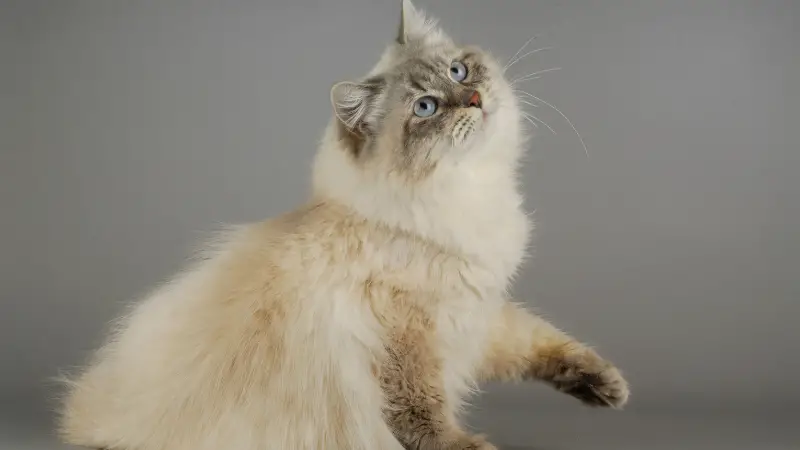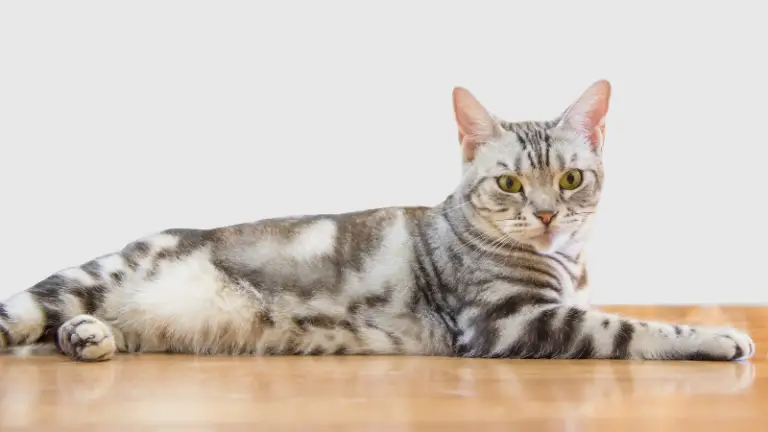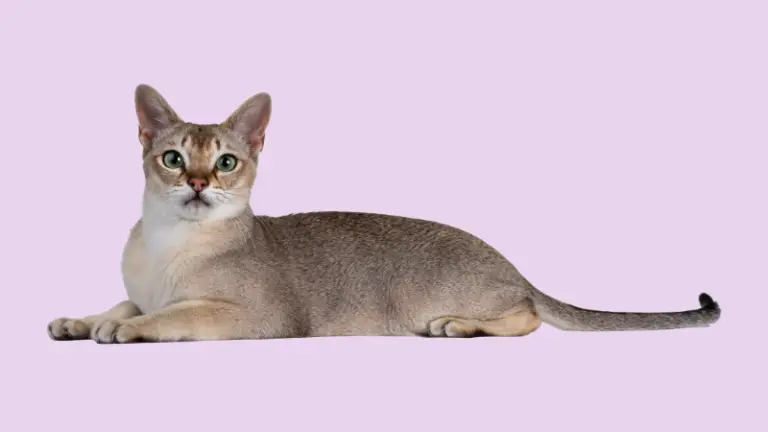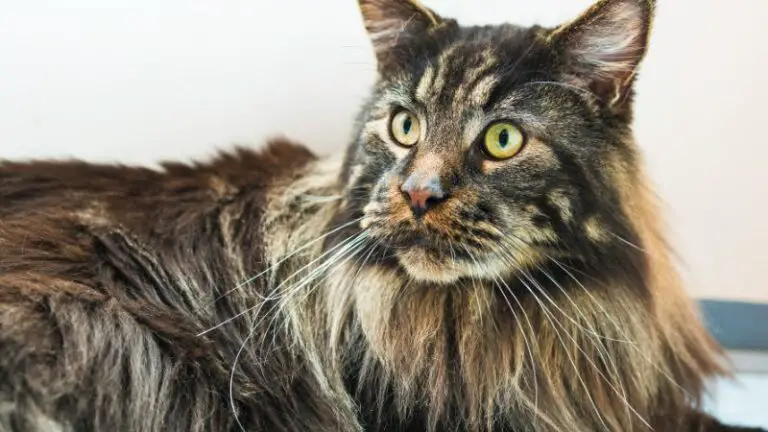SIBERIAN CAT PERSONALITY AND BREED (ALL YOU NEED TO KNOW)
Are you curious to know more about the Siberian Cat personality? Unfortunately, this breed only spread widely in the late 1980s, simultaneously with the collapse of the Soviet Union. Until then, it was hardly ever seen outside Russia, where his ancestors wandered in the far and icy North for more than a thousand years.
No one could have ever imagined that a creature with such extraordinary beauty could hide under the terrible ice of Siberia!
Let’s find out the main qualities of the Siberian cat.
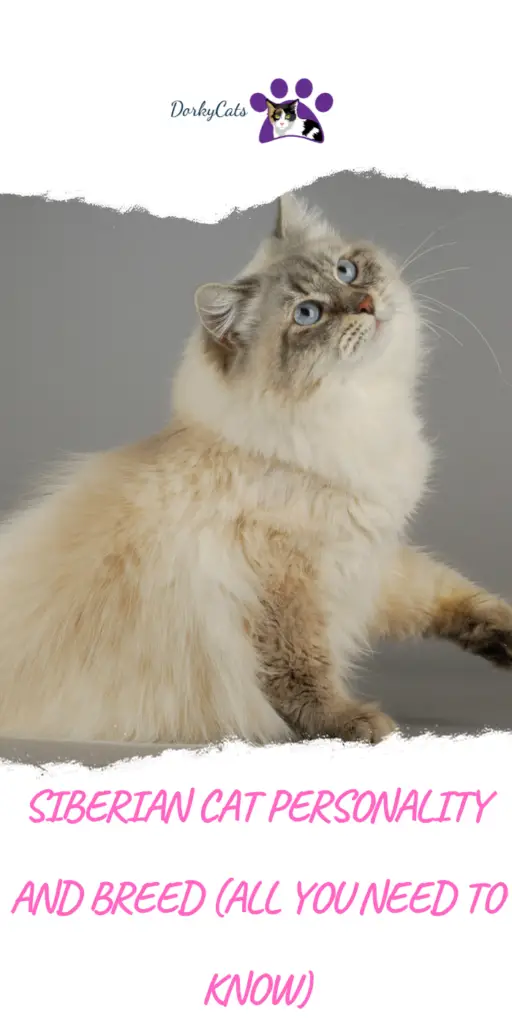
WHAT IS THE SIBERIAN CAT GENERAL ASPECT AND SIZE?
Despite the size, the Siberians are surprisingly agile. They know how to climb a shelf and walk on it without dropping anything.
Although they have no problems settling into a new home and establishing a close bond with its inhabitants, they retain a trace of independence and love to explore the outdoors without being intimidated by the ugly time.
The coat is much more abundant in winter and rare in summer. In spring, it should be brushed more because they sheds the hair of the winter months.
| Characteristic | Description | Notes |
|---|---|---|
| Summary | A race shaped by the landscape in which it evolved | |
| Personality | Sociable, with an unusual ability to purr three times more | Gets along with dogs |
| Appearance | Variable due to the longer coat. In in- winter looks bigger | |
| In the house | Recent studies have focused on the possible hypoallergenic nature of the coat. The discoveries show that this breed can cause an allergic response that is not too strong in subjects sensitive to cats | |
| Grooming | Not too fussy because the mantle doesn’t tends to get ruffled | |
| Most common health problems | Golden Siberians can suffer from hypertrophic cardiomyopathy (most common heart disease among cats), infrequent in other varieties | Because of the thickening of the muscle, it causes the heart failure |
| Behavior | Active and good at jumping. Males mature earlier, often as early as five months | |
| Ears | Medium-large, broad at the base and well spaced. Low and relatively small, they have tufts of fur indoor and outdoor for protect yourself from the cold | |
| Feet | Hairy feet He has big feet, often covered with tufts of hair | |
| Size | Big size; 6-12 kg the male, 3-6 kilograms, the female | |
| Eyes | Oblique, oval, and set well apart | |
| Head | Slightly rounded, longer than large and proportionate | |
| Legs | Medium-high, strong, and with large feet | |
| Coat | abundant, waterproof, with under- thick and water-repellent coat | |
| Allowed colors | Any shade of solid colors seal, red and diluted blue and cream |
As a curiosity, the tabby spots are frequent, with the white mask between the eyes
that reaches up to the chest. But, The thick ruff of the Siberian gives him a truly aristocratic look.
But as a note, the thick coat of the Siberian is particularly long on the neck and tail.
Siberian puppies open their eyes between the fifth and twelfth day of life. Therefore, always check the evidence that the Siberian puppies have been immediately accustomed to humans in the breeding.
WHAT IS THE HISTORY OF THE SIBERIAN CAT?
When it was first known in the West, it was called Siberian of the forests, a later shortened name. However, the origins of the Siberian are still pretty uncertain.
Still, it seems that it descends from a cross between the wild cats of the Ural Mountains and the earliest domestic cat specimens imported from settlers.
These cats are very similar to the Norwegian Forest cat. Still, in this respect, we could speak of “convergent evolution” rather than a direct relationship since their respective places of origin are less than thousands of kilometers.
Both developed in a region that has a very harsh winter climate. Good protection from the weather was essential for their survival, and this need has defined their appearance along such lines of descent.
The robust appearance of the Siberian suggests that this is a natural breed
originating from the cold Russian regions and Ukrainian. The first documents that attest to the established existence of the breed date back to 1700 and then to 1871 in Great Britain.
With the fall of the Berlin wall, these cats finally arrived in Western Europe, imported by Mr. and Mrs. Schultz. It is the beginning of the breeding of the breed of the Siberian cat. Finally, at the end of the 90s, is recognized by various internal associations.
SIBERIAN CAT PERSONALITY
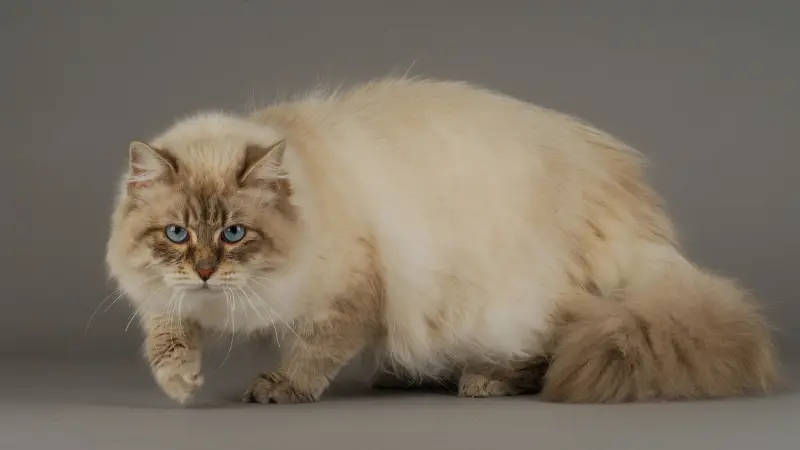
The Siberian is mainly known for its calm, sweet and affectionate character, even if you should never forget its wild origins.
While living well in the apartment, this cat must also have open spaces to give free rein to his hunter instinct, still very present, to his inexhaustible desire to play, and, above all, to the feline passion for climbing.
He is a companion for games ideal for smaller components smaller of the family; he generally tends to bond to a single human towards whom he shows affection which is
almost reverential.
He coexists without problems with other cats or dogs, but t is not suitable for dividing the roof with fish and little birds. He is brilliant and particularly curious; he can’t help it; he has to actively participate in his family’s daily life.
The Siberian cat is a lover of games and the water and is an astute and very fast hunter.
HOW TO CARE FOR AND FEED A SIBERIAN CAT
The Siberian possesses an extraordinary coat naturally endowed with an olily layer that ensures its impermeability and, at the same time the peculiar softness.
For this reason, special care is not necessary, except during moulting, in which it is advisable to carry out daily churning with wide-toothed combs. For the same reason, the Siberian cat does not particularly need to get regular baths.
Should cleaning be required for eyes and ears, specific products made purposely for eye cleaning should always be used.
A proteic diet is perfect for this cat; at a young age, they should get cheeses and eggs to ensure proper development. Both packaged and fresh foods are fine as long as they are high quality.
Puppies must be gently approached from an early age to get them used to socializing.
Non-castrated males stray quite a bit and can stay away from home, even for days. The female is, on the other hand, decidedly more housewife.
The Siberian is also known as a “hypoallergenic cat.” This dowry comes from the scarce, and in some cases total, inability to produce the Fel d1 protein, the primary allergen in cats for humans.
This protein is found in the saliva of cats which, licking themselves during daily cleaning, distribute it throughout the body.
FREQUENTLY ASKED QUESTIONS
Are Siberian cats cuddly?
Siberian cats are affectionate and loyal to their owner, so they love to cuddle and get their attention.
What is the lifespan of a Siberian cat?
You can expect a Siberian Cat to live up to 15 years. However, it is possible to prolong his life span with proper care.
What are the main health issues of a Siberian cat?
Some Siberian cats (Golden Siberian) can suffer from hypertrophic cardiomyopathy (the most common heart disease among cats), which is infrequent in other varieties. But it is also common for some Siberian cats to get polycystic kidney disease (PKD), feline lower urinary tract disease (FLUTD), and periodontal disease.
What is the price of a Siberian cat?
Siberian cats can be costly; the price varies between $ 5000 and $4000 depending on the breeder, pedigree, and age.
Can Siberian cats be left alone?
Siberian cats cannot be left alone for days; despite their wild past, they are affectionate cats and need human interaction to do well.
Are Siberian cats smart?
Siberian cats are brilliant like to play, climb, and generally are very intelligent. However, they are naturally curious, and you can find them getting into the weirdest situations.
Do Siberian cats like to be picked up?
In general, Siberian cats are cuddly and have no problems being picked up. However, it depends on the individual cat’s personality.
Can Siberian cats be indoor cats?
Siberian cats can be indoors, but the cat owner has to provide enough stimulation like cat trees, toys, and access to the outside such as a garden, yard, patio, and similar.
How often should I bathe my Siberian cat?
Siberian cats do not need regular baths; bathing them every 3 to 6 months should be enough. In addition, their coat helps them to self-clean easily.
Are Siberian cats good for first-time owners?
Due to their affectionate nature, Siberian cats are perfect for first-time owners due to their loving nature. They are not highly demanding but are enjoyable, curious, and funny.
How do you tell if your cat is a Siberian?
You can recognize a Siberian cat from the color and length of its fur and the characteristic three-layer coat they have developed through the centuries.
The table in this article can tell you the main qualities of the Siberian cat and how you can understand if your cat is a Siberian.

